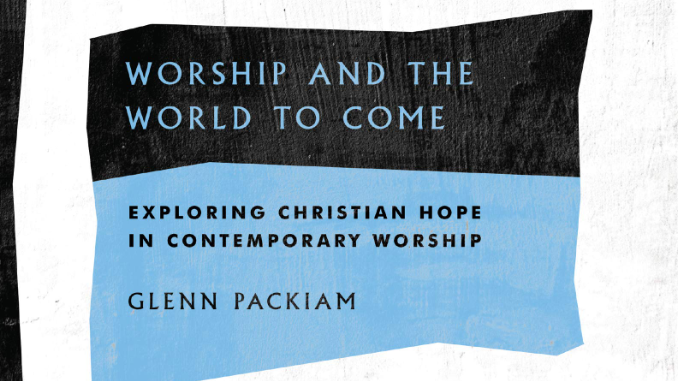
Published by IVP Academic on July 28, 2020
Genres: Academic, Non-Fiction, Christian Life, Theology
Goodreads

Christians sing because we are people of hope. Yet our hope is unlike other kinds of hope. We are not optimists; nor are we escapists. Christian hope is uniquely shaped by the resurrection of Jesus Christ from the dead and by the promise of our own future resurrection. How is that hope both expressed and experienced in contemporary worship? In this volume in the Dynamics of Christian Worship series, pastor, theologian, and songwriter Glenn Packiam explores what Christians sing about when they sing about hope and what kind of hope they experience when they worship together. Through his analysis and reflection, we find that Christian worship is crucial to both the proclamation and the formation of Christian hope.
In this academic work, pastor and professor Glenn Packiam explores contemporary worship through the dual lenses of theology and sociology. He seeks to understand the reality of Christian hope through Scripture, but he also investigates what hope looks like to different congregants, and how the rituals and scripts of contemporary worship communicate different views of eschatology. This book is very dense, and even though I frequently read academic works, I found this harder to get through than some others. This is a wonderful resource for preachers, worship leaders, and seminary students, but even though it offers an interesting perspective on worship and church life, it is so in-depth that I would not recommend it to most lay people.
Theology and Sociology
Worship and the World to Come: Exploring Christian Hope in Contemporary Worship has four parts. The first focuses on Packiam’s explanations of practical theology, sociological views of the church, and contemporary views of worship, the second studies eschatological hope with reference to authors like N.T. Wright and Jürgen Moltmann, the third addresses popular views of eschatology and hope as communicated and experienced during contemporary worship services, and the fourth addresses the role of the Holy Spirit and offers ideas for how songwriters and worship leaders can improve their craft in the future. Packiam urges church leaders to convey a robust sense of hope based in the resurrection of Christ and our future bodily resurrections, instead of presenting heaven as a disembodied escape.
I especially appreciate Packiam’s emphasis on the Holy Spirit throughout this book. Even though he encourages songwriters to improve congregational worship music, he shares evidence that even theologically shallow and lyrically weak songs can deeply move people, because God is present and working in the midst of human imperfection. He does a great job exploring both Christian theology and sociological study, and provides a balanced understanding of how community rituals and the presence of God impact people’s experiences in worship.
Narrow Church Tradition Focus
However, the practical part of the book focuses almost exclusively on Presbyterian and Charismatic traditions. Since the author did his fieldwork at one church from each of those denominations, it makes sense that he focuses on them, but even when he is presenting survey statistics, he lumps other denominations into the statistical category of “national worship leaders” and does not provide specific data that would be relevant to readers from other church backgrounds. This limits the book’s applicability, but since he based this project on a dissertation, it is possible that he has already published a broader range of statistical information, and was only narrowing his focus here.
This book is also limited by its focus on just two church congregations. I understand that this was the nature of Packiam’s research, since he was doing ethnographic fieldwork in two limited environments, but even though some of his findings from observation and communication are generally applicable, his writing does not convey the depth and range of different views and worship styles in America. I understand that this is beyond the scope of the book, but he often makes strong assertions based on his observations without always softening them with a sense of how different something might be in another church down the street, in another denomination, or in a different demographic group.
Conclusion
Overall, this book is interesting and important, helping church leaders study eschatological hope and evaluate the ways that they are communicating theology to their congregants through public worship. However, this book is so dense and full of academic phraseology that I found it difficult to read, and the practical sections of the book are narrow in their denominational focus, providing great insight about two churches without a breadth of understanding or examples from believers in different contexts. This book is worth reading for a variety of church leaders, and can be hugely beneficial in the context of seminary studies, but I would not recommend this to lay readers unless they are passionately interested in the subject.
